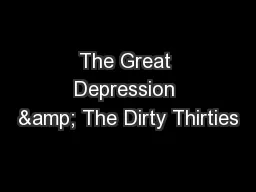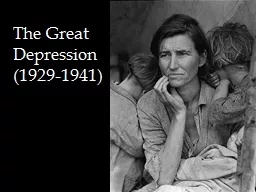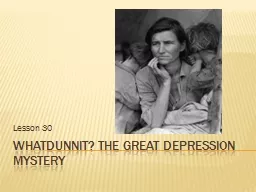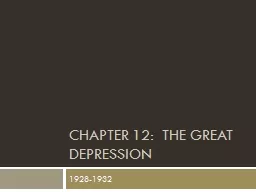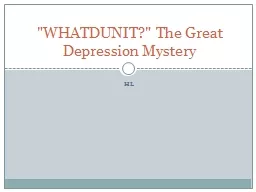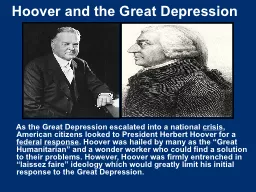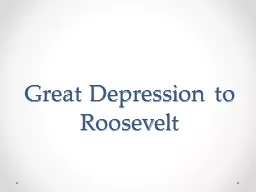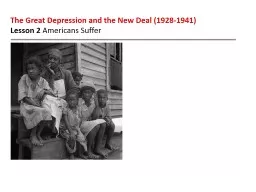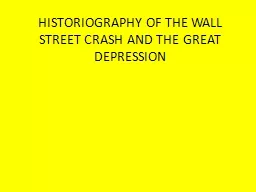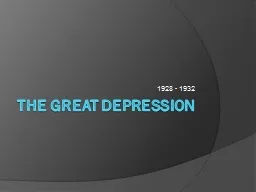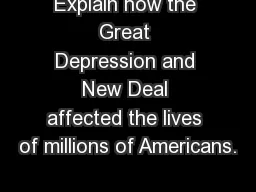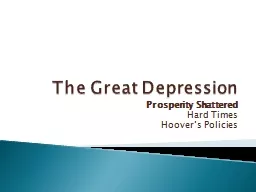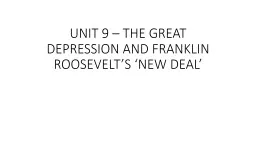PPT-The Great Depression & The Dirty Thirties
Author : tawny-fly | Published Date : 2018-11-12
19291939 The end of the good times Stock Market Crash As the 1920s ended so did the prosperity and good times On October 29 th 1929 a date known as Black Tuesday
Presentation Embed Code
Download Presentation
Download Presentation The PPT/PDF document "The Great Depression & The Dirty Thi..." is the property of its rightful owner. Permission is granted to download and print the materials on this website for personal, non-commercial use only, and to display it on your personal computer provided you do not modify the materials and that you retain all copyright notices contained in the materials. By downloading content from our website, you accept the terms of this agreement.
The Great Depression & The Dirty Thirties: Transcript
Download Rules Of Document
"The Great Depression & The Dirty Thirties"The content belongs to its owner. You may download and print it for personal use, without modification, and keep all copyright notices. By downloading, you agree to these terms.
Related Documents

